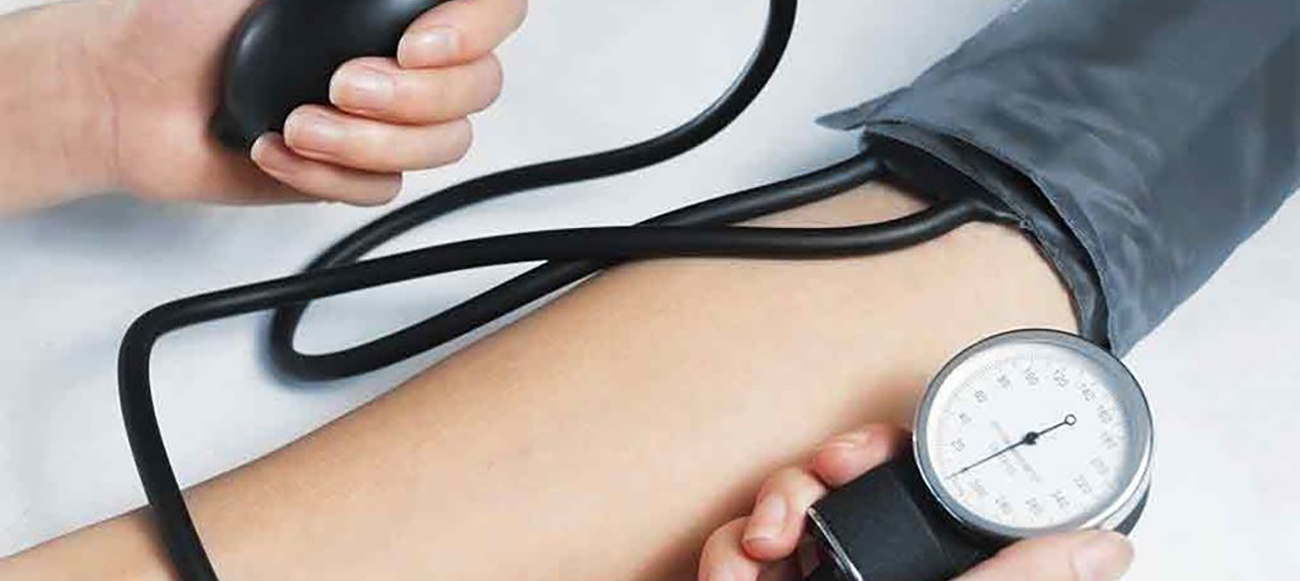Blood Pressure Check

This page provides instructions for taking blood pressure. You can also practice taking blood pressure using our free online blood pressure cuff:
Sphygmomanometers
- There are three types of sphygmomanometersused to measure blood pressure: mercury, aneroid, and digital.
- Reading blood pressure by auscultation is considered the gold standard by the Heart, Lung and Blood Institute of the NIH.
Subject
- Position: supine, seated, standing.
- In seated position, the subject’s arm should be flexed.
- The flexed elbow should be at the level of the heart.
- If the subject is anxious, wait a few minutes before taking the pressure.
Procedures
- To begin blood pressure measurement, use a properly sized blood pressure cuff. The length of the cuff’s bladder should be at least equal to 80% of the circumference of the upper arm.
- Wrap the cuff around the upper arm with the cuff’s lower edge one inch above the antecubital fossa.
- Lightly press the stethoscope’s bell over the brachial artery just below the cuff’s edge. Some health care workers have difficulty using the bell in the antecubital fossa, so we suggest using the bell or the diaphragm to measure the blood pressure.
- Rapidly inflate the cuff to 180mmHg. Release air from the cuff at a moderate rate (3mm/sec).
- Listen with the stethoscope and simultaneously observe the sphygmomanometer. The first knocking sound (Korotkoff) is the subject’s systolic pressure. When the knocking sound disappears, that is the diastolic pressure (such as 120/80).
- Record the pressure in both arms and note the difference; also record the subject’s position (supine), which arm was used, and the cuff size (small, standard or large adult cuff).
- If the subject’s pressure is elevated, measure blood pressure two additional times, waiting a few minutes between measurements.
- A BLOOD PRESSURE OF 180/120mmHg OR MORE REQUIRES IMMEDIATE ATTENTION!
Precautions
- Aneroid and digital manometers may require periodic calibration.
- Use a larger cuff on obese or heavily muscled subjects.
- Use a smaller cuff for pediatric patients.
- For pediatric patients a lower blood pressure may indicate the presence of hypertension.
- Don’t place the cuff over clothing.
- Flex and support the subject’s arm.
- In some patients the Korotkoff sounds disappear as the systolic pressure is bled down. After an interval, the Korotkoff sounds reappear. This interval is referred to as the “auscultatory gap.” This pathophysiologic occurrence can lead to a marked under-estimation of systolic pressure if the cuff pressure is not elevated enough. It is for this reason that the rapid inflation of the blood pressure cuff to 180mmHg was recommended above. The “auscultatory gap” is felt to be associated with carotid atherosclerosis and a decrease in arterial compliance in patients with increased blood pressure.
Practice
- Use our aneroid and mercury sphygmomanometers simulators to practice your blood pressure measurement skills.
- Then take one of our courses that feature blood pressure, auscultation, and other physical examination skills.
- For pediatric patients, the NIH provides tables which use age, sex and height to interpret blood pressure findings. View our pediatric blood pressure drills for more information.
